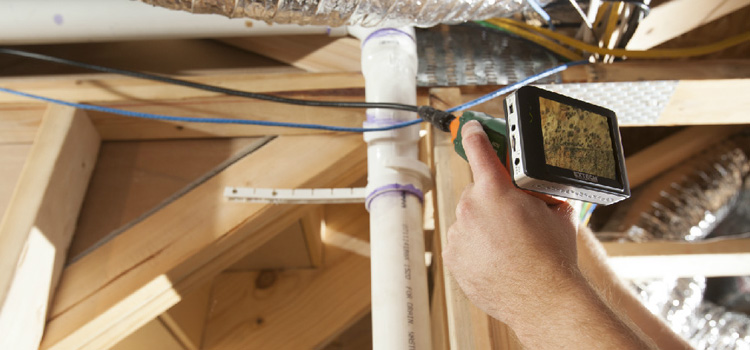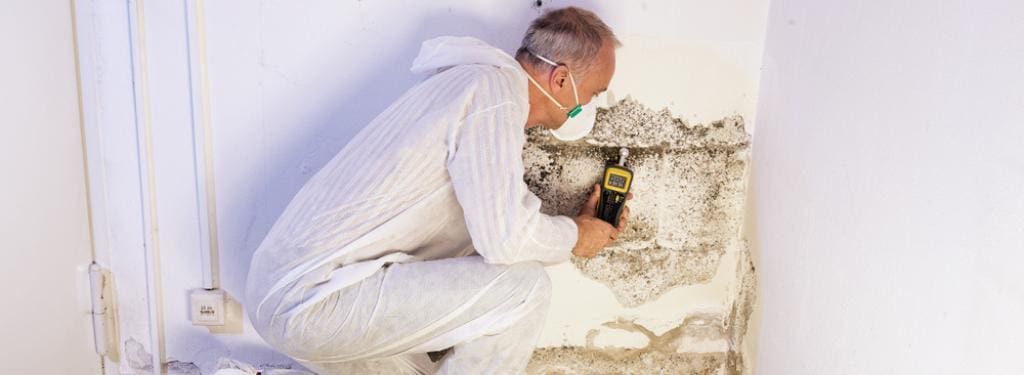Making Sure Post Remediation Verification Accuracy
Wiki Article
Specialist Tips for Blog Post Mold Remediation Success
In the world of mold and mildew remediation, efficiently removing mold and mildew is just half the battle; the real obstacle exists in avoiding its reappearance. By adhering to experienced pointers and ideal techniques, people can safeguard their spaces versus mold resurgence and preserve a healthy interior environment.
Screen Moisture Levels Consistently
After completing mold remediation procedures, preserving optimum moisture degrees is important to avoid mold and mildew re-growth and make certain a healthy and balanced interior setting. High moisture degrees above 60% produce a favorable atmosphere for mold to flourish, making routine keeping track of an aggressive action to stop any kind of future mold and mildew problems.Additionally, establishing a routine timetable for moisture checks, especially in risky locations such as basements, washrooms, and kitchens, is a positive strategy to mold and mildew avoidance. By regularly keeping an eye on humidity levels, building proprietors can properly reduce the risk of mold and mildew reoccurrence and preserve a healthy interior environment post-remediation.
Conduct Thorough Inspections Post-Remediation
Complying with the conclusion of mold and mildew removal treatments, it is imperative to carry out extensive inspections to verify the efficiency of the removal process. These post-remediation assessments are vital in making certain that the mold and mildew problem has actually been successfully attended to and that there is no recurrence or continuing to be mold development. Examinations should be brought out by certified professionals who have proficiency in determining mold and assessing interior air high quality.Throughout these examinations, numerous approaches such as visual assessments, air tasting, and surface sampling may be employed to extensively review the remediated locations. Visual evaluations include a thorough inspection of the facilities to inspect for any kind of noticeable indicators of mold and mildew growth or water damage. Air sampling helps in identifying the air-borne mold spore degrees, while surface area tasting can detect mold and mildew bits on surface areas.
Implement Correct Ventilation Strategies
After making certain the performance of the mold and mildew removal procedure through complete inspections, the following essential step is to concentrate on carrying out proper ventilation strategies. Ample air flow is necessary in avoiding mold and mildew reoccurrence by managing wetness degrees and advertising air blood circulation. To achieve this, it is advised to make use of exhaust fans in areas vulnerable to high moisture, such as shower rooms and kitchen areas. Furthermore, opening up doors and home windows when weather condition allows can aid improve airflow and reduce dampness accumulation. Air dehumidifiers and purifiers are additionally useful devices in preserving optimal interior air top quality.
Appropriate air flow not just aids in preventing mold and mildew development yet likewise adds to the general wellness and convenience of residents. By making sure appropriate ventilation throughout the property, you can lower the threat of Post Mold remediation cleaning mold and mildew regrowth and develop a much healthier living atmosphere. Regular upkeep of ventilation systems, consisting of cleansing and filter replacements, is crucial to sustaining efficient air flow. Consulting with a/c experts can offer more understandings right into enhancing air flow methods for your certain property needs.

Usage Mold-Resistant Materials for Fixes
To boost the long-term effectiveness of mold removal efforts, integrating mold-resistant materials for repair work is critical in reducing the risk of future mold growth. Mold-resistant materials are made to stand up to moisture and inhibit mold and mildew growth, making them a necessary choice for areas susceptible to wetness and moisture. When fixing areas impacted by mold and mildew, utilizing products such as mold-resistant drywall, mold-resistant paints, and mold-resistant caulking can help prevent mold and mildew reoccurrence.Mold-resistant drywall is an outstanding option to typical drywall in areas like cellars and shower rooms where moisture degrees are greater. When exposed to damp conditions, this kind of drywall has a special finishing that withstands mold and mildew growth even. Furthermore, making use of mold-resistant paints consisting of antimicrobial representatives can even more hinder mold advancement on wall surfaces and ceilings.
In locations where moisture prevails, such as kitchen areas and shower rooms, using mold-resistant caulking around sinks, home windows, and tubs can aid seal out water and protect against mold from taking hold in fractures and gaps. By buying these mold-resistant materials during fixings post-remediation, you can significantly lower the possibility of future mold and mildew problems and maintain a healthier interior atmosphere.
Maintain Tidiness and Address Water Issues
Guaranteeing tidiness and immediately addressing water problems are basic methods to maintain in securing indoor areas from mold reinfestation. After mold and mildew remediation, it is important to keep a tidy atmosphere to stop the regrowth of mold and mildew (Post Mold Remediation). Normal cleansing, dusting, and vacuuming can help eliminate any type of lingering mold and mildew spores and avoid them from multiplying and resolving. In addition, maintaining interior spaces dry and resolving any water problems without delay is essential in mold and mildew avoidance. Leakages, water invasion, or high moisture levels can create the perfect reproduction ground for mold and mildew, so it is necessary to fix any type of water-related issues promptly.To maintain sanitation, take into consideration utilizing HEPA filters in vacuum cleaners and air purifiers to trap mold and mildew spores and stop their circulation in the air. Making sure appropriate ventilation in locations prone to moisture buildup, such as bathrooms and kitchen areas, can assist keep moisture levels in check. By remaining watchful about sanitation and dealing with water problems without delay, you can successfully protect against mold reinfestation and preserve a healthy and balanced interior setting.
Verdict

In the realm of mold remediation, efficiently eradicating mold and mildew is just half the battle; the real difficulty exists in avoiding its reappearance. After completing mold removal procedures, keeping optimum humidity degrees is crucial to prevent mold and mildew re-growth and make sure a healthy and balanced interior environment. High moisture degrees above 60% develop a favorable atmosphere for mold to grow, making normal monitoring a proactive procedure to avoid any future mold and mildew issues.
To boost the lasting effectiveness of mold removal efforts, incorporating mold-resistant materials for repair services is crucial in reducing the risk of future mold and mildew development. After mold removal, it is important to keep a clean atmosphere to avoid the regrowth of mold.
Report this wiki page